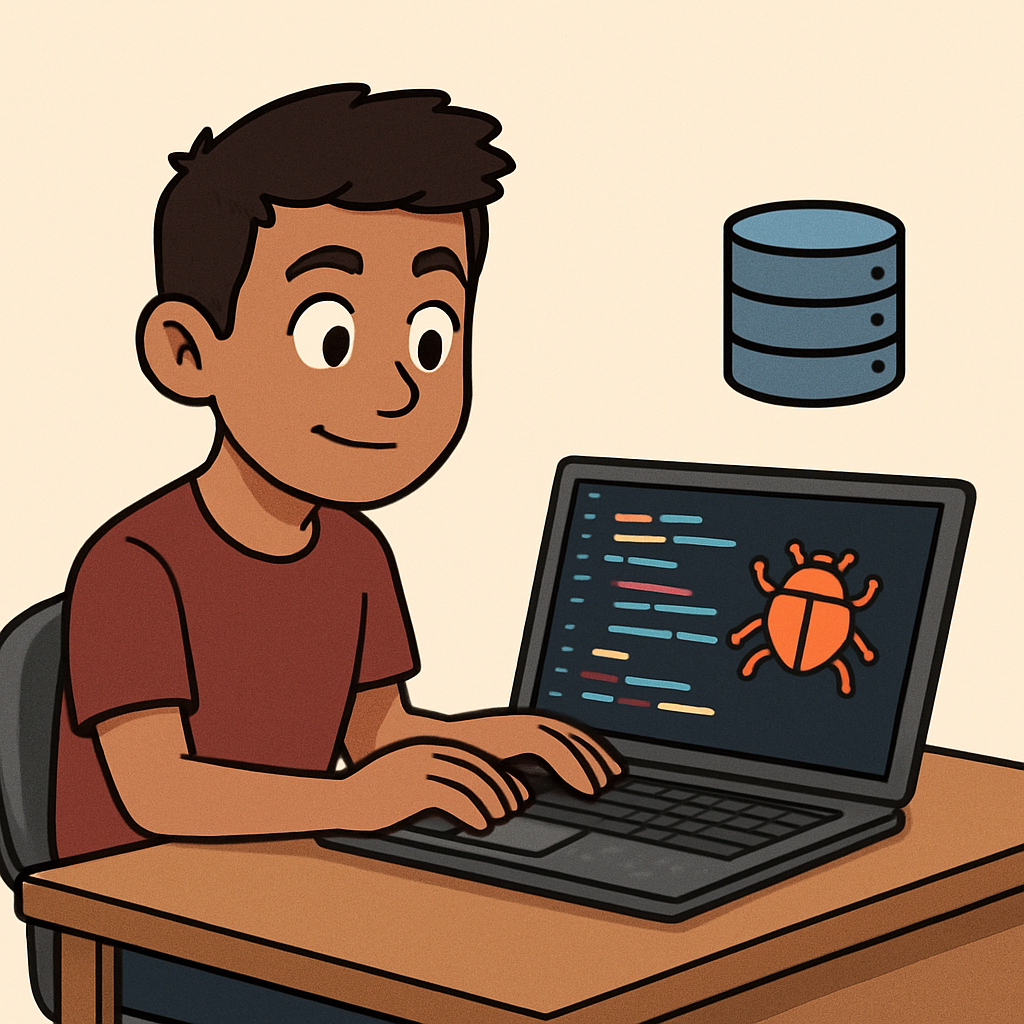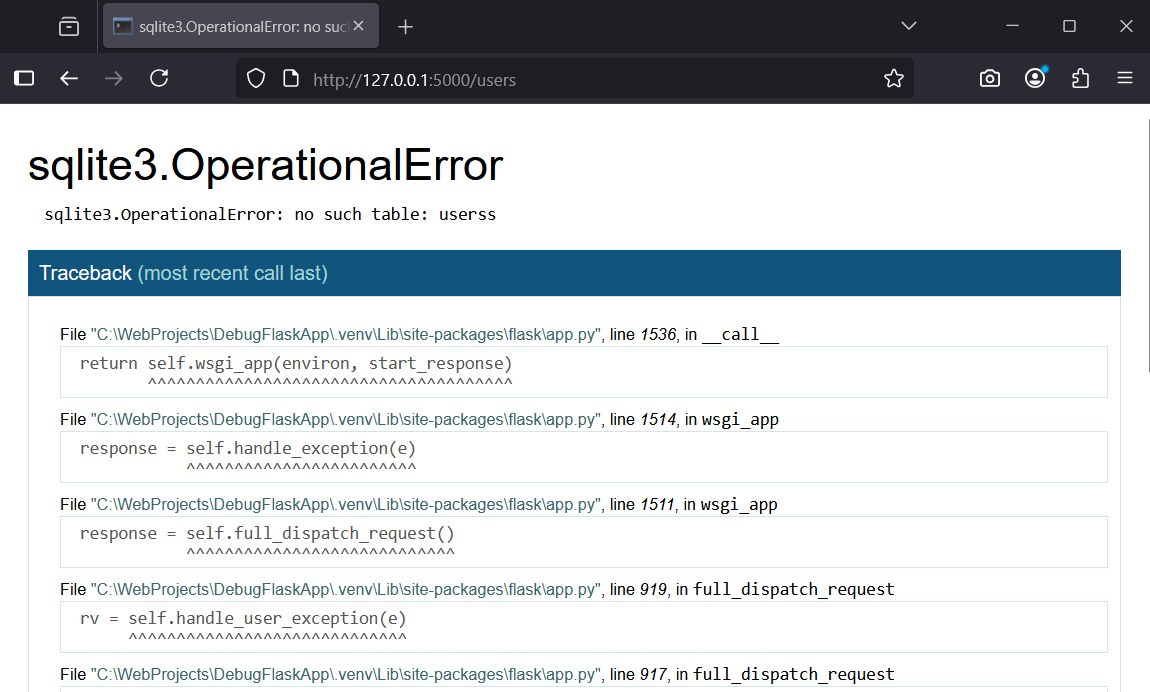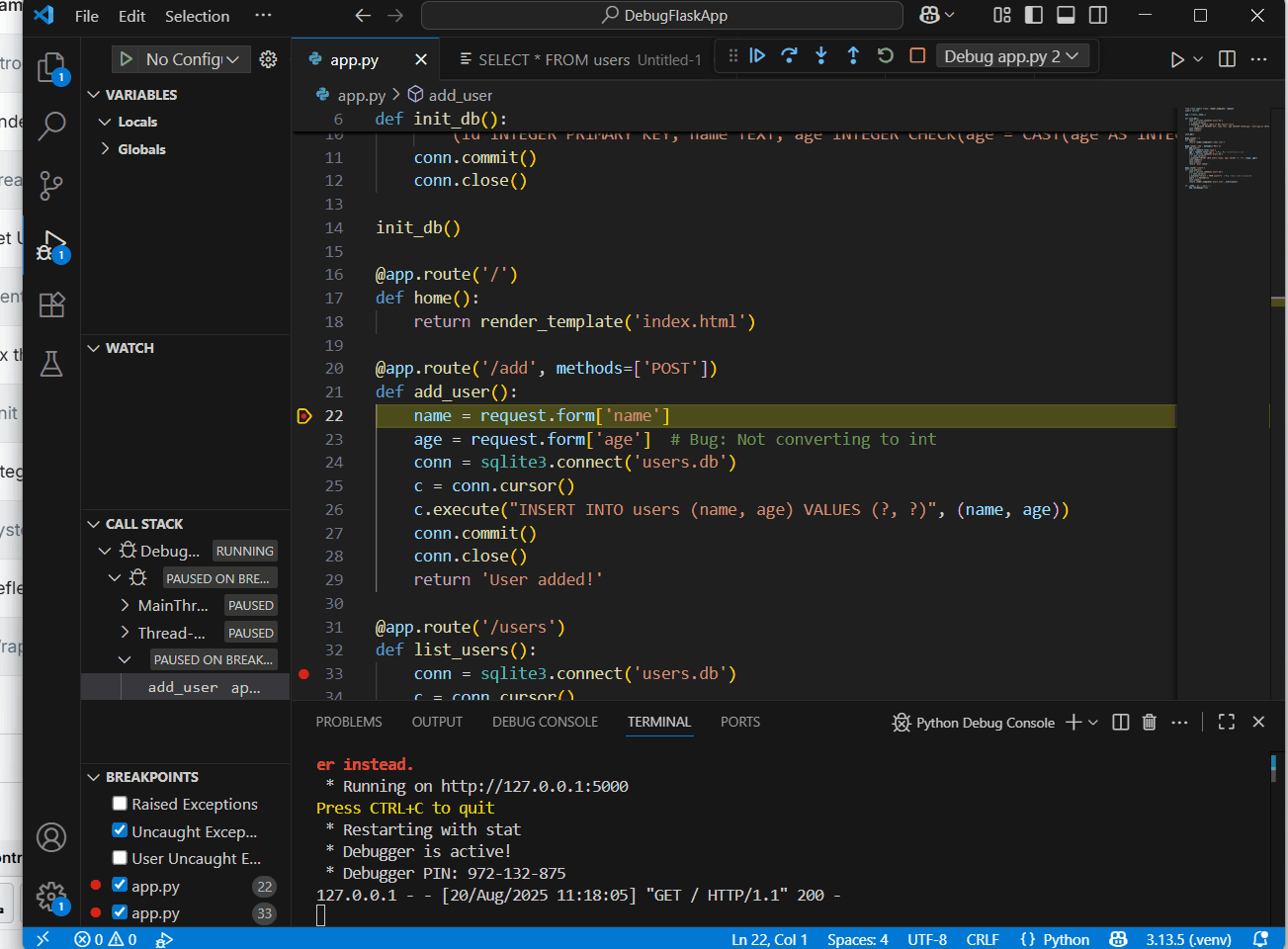 In this lesson, you will explore advanced debugging and testing techniques in software engineering. You will learn about the stages of testing: unit testing, integration testing, and system testing. Then, you will apply these concepts by debugging and testing a Flask web application that uses SQLite for data storage. Finally, you will reflect on the code's limitations and suggest improvements.
In this lesson, you will explore advanced debugging and testing techniques in software engineering. You will learn about the stages of testing: unit testing, integration testing, and system testing. Then, you will apply these concepts by debugging and testing a Flask web application that uses SQLite for data storage. Finally, you will reflect on the code's limitations and suggest improvements.
By the end, you will be able to:
DebugFlaskApp' for this lesson.Before debugging, let's review the key stages of software testing:
Debugging involves identifying and fixing errors (bugs) in the code, often using tools like print statements, breakpoints in VS Code, or error messages.
In the next steps, you will debug a provided Flask app that has intentional bugs, then apply these testing stages.
Create a virtual environment to manage your project's dependencies separately.
View > Command Palette.Python: Create Environment' and select it.Venv' as the type.Python version..venv' folder in 'DebugFlaskApp'.Now, open a terminal in VS Code to install Flask if it's not already installed.
View > Terminalpip install flaskCreate the initial structure for a simple Flask app that manages a user database with SQLite. This code has bugs that you will fix later.
First, in your 'DebugFlaskApp' folder, create a file called 'app.py' and add this complete code:
from flask import Flask, render_template, request
import sqlite3
app = Flask(__name__)
def init_db():
conn = sqlite3.connect('users.db')
c = conn.cursor()
c.execute('''CREATE TABLE IF NOT EXISTS users
(id INTEGER PRIMARY KEY, name TEXT, age INTEGER CHECK(age = CAST(age AS INTEGER)))''')
conn.commit()
conn.close()
init_db()
@app.route('/')
def home():
return render_template('index.html')
@app.route('/add', methods=['POST'])
def add_user():
name = request.form['name']
age = request.form['age'] # Bug: Not converting to int
conn = sqlite3.connect('users.db')
c = conn.cursor()
c.execute("INSERT INTO users (name, age) VALUES (?, ?)", (name, age))
conn.commit()
conn.close()
return 'User added!'
@app.route('/users')
def list_users():
conn = sqlite3.connect('users.db')
c = conn.cursor()
c.execute("SELECT * FROM userss") # Bug: Table name misspelled
users = c.fetchall()
conn.close()
return render_template('users.html', users=users)
if __name__ == '__main__':
app.run(debug=True)Create a 'templates' folder inside 'DebugFlaskApp'. Inside 'templates', create 'index.html':
<!DOCTYPE html>
<html>
<head><title>Add User</title></head>
<body>
<h1>Add User</h1>
<form method="post" action="/add">
<label>Name:</label><input type="text" name="name"><br>
<label>Age:</label><input type="text" name="age"><br>
<button type="submit">Add</button>
</form>
<a href="/users">View Users</a>
</body>
</html>And 'users.html' file in the 'templates':
<!DOCTYPE html>
<html>
<head><title>Users</title></head>
<body>
<h1>Users</h1>
<ul>
{% for user in users %}
<li>{{ user[1] }} (Age: {{ user[2] }})</li>
{% endfor %}
</ul>
<a href="/">Back</a>
</body>
</html>python app.py. Visit http://127.0.0.1:5000/. Try adding a user and viewing the list – you will encounter errors. These are the bugs to fix next.Now, lets debug the app.
There are 2 bugs in the code:
Use VS Code's debugger:
Using the debugger, step through the code line by line until it throws an error. Do this for both bugs.

